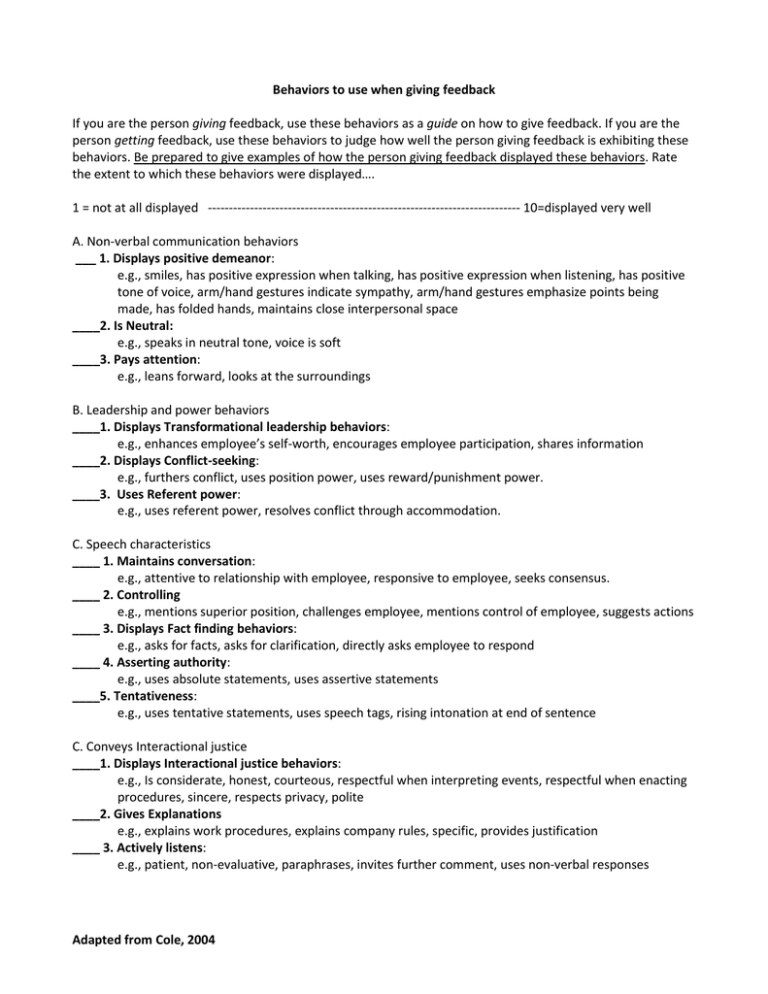Behaviors to use when giving feedback giving getting
advertisement

Behaviors to use when giving feedback If you are the person giving feedback, use these behaviors as a guide on how to give feedback. If you are the person getting feedback, use these behaviors to judge how well the person giving feedback is exhibiting these behaviors. Be prepared to give examples of how the person giving feedback displayed these behaviors. Rate the extent to which these behaviors were displayed…. 1 = not at all displayed -------------------------------------------------------------------------- 10=displayed very well A. Non-verbal communication behaviors ___ 1. Displays positive demeanor: e.g., smiles, has positive expression when talking, has positive expression when listening, has positive tone of voice, arm/hand gestures indicate sympathy, arm/hand gestures emphasize points being made, has folded hands, maintains close interpersonal space ____2. Is Neutral: e.g., speaks in neutral tone, voice is soft ____3. Pays attention: e.g., leans forward, looks at the surroundings B. Leadership and power behaviors ____1. Displays Transformational leadership behaviors: e.g., enhances employee’s self-worth, encourages employee participation, shares information ____2. Displays Conflict-seeking: e.g., furthers conflict, uses position power, uses reward/punishment power. ____3. Uses Referent power: e.g., uses referent power, resolves conflict through accommodation. C. Speech characteristics ____ 1. Maintains conversation: e.g., attentive to relationship with employee, responsive to employee, seeks consensus. ____ 2. Controlling e.g., mentions superior position, challenges employee, mentions control of employee, suggests actions ____ 3. Displays Fact finding behaviors: e.g., asks for facts, asks for clarification, directly asks employee to respond ____ 4. Asserting authority: e.g., uses absolute statements, uses assertive statements ____5. Tentativeness: e.g., uses tentative statements, uses speech tags, rising intonation at end of sentence C. Conveys Interactional justice ____1. Displays Interactional justice behaviors: e.g., Is considerate, honest, courteous, respectful when interpreting events, respectful when enacting procedures, sincere, respects privacy, polite ____2. Gives Explanations e.g., explains work procedures, explains company rules, specific, provides justification ____ 3. Actively listens: e.g., patient, non-evaluative, paraphrases, invites further comment, uses non-verbal responses Adapted from Cole, 2004

